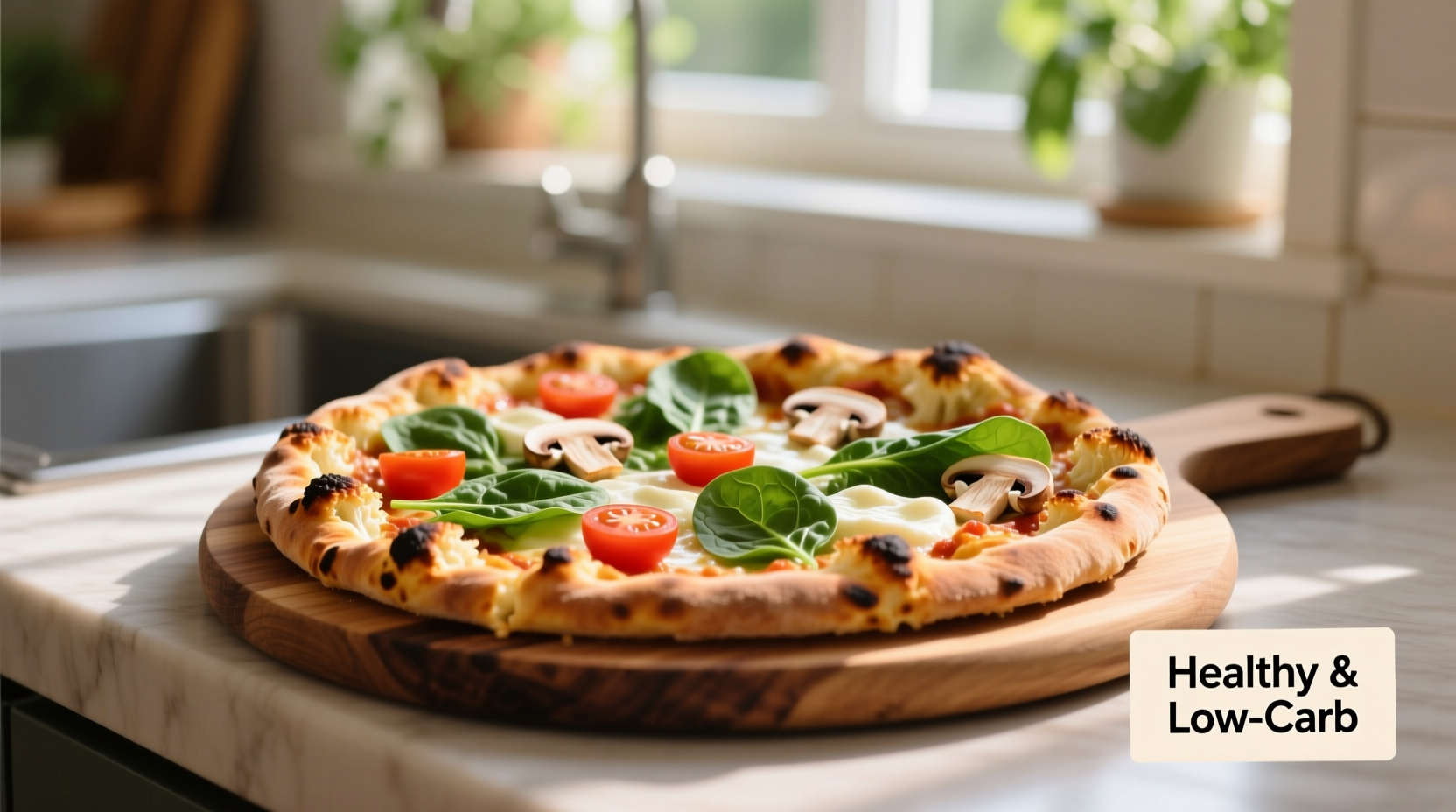Nutritional Reality Check: Cauliflower Crust vs. Traditional Crust
When evaluating whether cauliflower crust pizza is truly healthy, we need to examine the actual nutritional differences. Most commercial cauliflower crusts contain about 80-120 calories per serving (compared to 150-250 for traditional crust), with significantly fewer net carbs (8-15g vs 20-35g). However, this advantage comes with trade-offs.
| Nutrient | Cauliflower Crust (per 100g) | Traditional Wheat Crust (per 100g) |
|---|---|---|
| Calories | 70-100 | 250-280 |
| Total Carbohydrates | 10-15g | 45-50g |
| Fiber | 2-4g | 2-3g |
| Protein | 3-5g | 8-10g |
| Sodium | 300-500mg | 200-350mg |
Data sourced from USDA FoodData Central and analysis of major grocery store brands confirms these patterns. While cauliflower crust generally offers fewer calories and carbs, many commercial versions compensate with added cheese, eggs, and binding agents that increase fat content.
Where Cauliflower Crust Delivers Real Health Benefits
Cauliflower crust provides genuine advantages for specific dietary needs. For those managing blood sugar levels, the lower carbohydrate content (typically 5-8g net carbs per slice versus 15-25g in traditional crust) creates a more favorable glycemic response. The vegetable base also contributes valuable nutrients like vitamin C and K that traditional crust lacks.
According to research published in the Journal of the Academy of Nutrition and Dietetics, increasing vegetable consumption through creative formats like cauliflower crust can help bridge the significant gap between recommended and actual vegetable intake. The average American consumes only 1 cup of vegetables daily—less than half the recommended amount.

Hidden Downsides of Store-Bought Cauliflower Crust
Many consumers don't realize that most commercial cauliflower crusts contain significant amounts of added starches and sodium. A detailed ingredient analysis by Consumer Reports revealed that some popular brands contain as much as 300-500mg of sodium per serving—comparable to processed snack foods. The processing required to create a pizza-friendly texture often strips away some of cauliflower's natural fiber benefits.
Registered dietitians at the American Heart Association caution that the "health halo" effect can lead consumers to overeat cauliflower crust pizza. Because it's perceived as healthier, people often consume larger portions or load it with high-calorie toppings, negating the initial nutritional advantage.
Making the Healthiest Choice: Practical Guidelines
To maximize the health benefits of cauliflower crust pizza, follow these evidence-based recommendations:
- Read labels carefully: Choose options with cauliflower as the first ingredient and minimal added starches
- Watch sodium content: Opt for versions with less than 300mg sodium per serving
- Control portions: Stick to one serving size (typically 1/4 of a crust)
- Boost nutrition: Top with additional vegetables rather than extra cheese or processed meats
- Consider homemade: DIY versions using riced cauliflower, egg, and cheese typically contain fewer additives
A comparative analysis by the University of California Nutrition Department found that homemade cauliflower crust contains approximately 30% less sodium and 20% more fiber than store-bought alternatives, while maintaining similar texture and flavor profiles.
When Traditional Crust Might Actually Be Healthier
For some dietary goals, traditional whole-grain pizza crust may offer advantages over cauliflower crust. Whole wheat crust provides more complete protein and sustained energy from complex carbohydrates. The Dietary Guidelines for Americans 2020-2025 recommend that at least half of all grains consumed should be whole grains for optimal nutrition.
Individuals with specific digestive sensitivities may also find cauliflower crust problematic. The high fiber content combined with certain binding agents can cause bloating or discomfort for some people. Registered dietitians at Mayo Clinic report that approximately 15% of patients who switch to cauliflower crust experience mild digestive issues they didn't have with traditional crust.
Who Benefits Most from Cauliflower Crust Pizza?
Cauliflower crust pizza serves specific dietary needs particularly well:
- People following low-carb or keto diets (when prepared with minimal added starches)
- Those requiring gluten-free options (verify ingredients as some brands contain wheat)
- Individuals looking to increase vegetable consumption without significantly changing eating habits
- People managing type 2 diabetes who need to control carbohydrate intake
However, for active individuals needing sustained energy or those without specific dietary restrictions, a whole-grain traditional crust might provide better overall nutrition. The key is matching your pizza choice to your specific health goals rather than assuming one option is universally "healthier."











 浙公网安备
33010002000092号
浙公网安备
33010002000092号 浙B2-20120091-4
浙B2-20120091-4